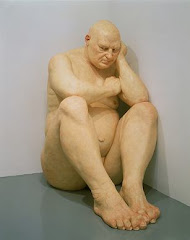After all the ballots were counted, the mainstream media talking heads and political pundits were involved in a mystery, trying to explain how and why Hillary Clinton was able to defeat Barack Obama by two percentage points when every poll conducted prior to the New Hampshire primary predicted an Obama victory by an average eight points. Furthermore, exit polls indicated the young Senator from Illinois would defeat the battle tested Senator from New York by five to twelve percentage points.
Even Senator Clinton’s staff expected defeat, and was headed for the life rafts and life preservers. Clinton staffers were in danger of losing their jobs. The campaign itself would have to be restructured.
If you look closely, the pollsters were half right. The Fox News/Opinion Dynamic, New York Times/CBS, Rasmussen, WNBC/Marist College polls predicted Barack Obama would capture 32% to 37% of the vote.[i] Obama’s actual percentage of the vote was 37%.
The polls were correct about Obama, but were wrong about Clinton. She was polling in the 25% to 30% range. Instead, the former Inevitable Candidate lives to fight another day after the late surge of support in New Hampshire.
What happened? Why were so many polls wrong? And where did Hillary Clinton’s 10% increase come from? There are three theories.
The Rick Lazio Effect, named after the New York Republican candidate for the United States Senate and Hillary Clinton’s campaign opponent in 2000. During a debate, Mr. Lazio pulled out a folded sheet of paper, walked over to Ms Clinton, and demanded she sign a pledge not to accept “soft money.” Mr. Lazio was rather belligerent.
After the debate, a woman in the audience approached the moderator Tim Russert, and said she liked the Republican candidate until he decided to stalk the former First Lady. “At that moment, she confided, the Long Island congressman suddenly conjured up the image of her husband, waving a credit card receipt in her face, yelling at her that she had overcharged, his eyes bulging, his veins popping, screaming at her to return everything to the store.”[ii]
Prior to the New Hampshire primary, her male opponents roughed up Senator Clinton in a debate, and she became emotional during a question and answer session the day before the primary. The perception of unfairness towards a female candidate may have been enough to convince the legion of women over the age of 45 to support Clinton against her male bullies. Over 55% of the women in New Hampshire voted for Ms Clinton, a 25% increase in support she received in Iowa. Obama captured 34% of votes cast by women besting Clinton who was supported by 30%.
Second, The Richard Roma Effect. In the movie Glengarry Glenross, Richard Roma, as portrayed by the great actor Al Pacino, walks up a bar and orders an alcoholic beverage on a very hot and humid day. “They say you should not drink alcohol when it’s hot.” Another bar patron asks, “Who says that?” Roma answers, “Something I read. For they say it dehydrates you. They say you should drink water, but I subscribe to the law of contrary public opinion. If everyone thinks one thing, then I say bet the other way.”[iii]
The second theory could easily be called the New Hampshire Effect, but I wanted to make it sound cooler by interjecting a pop culture reference, thus named The Richard Roma Effect.
New Hampshire prides itself on its au contraire spirit during the election process, and has had a history of turning the presidential election process upside down. The political pundits and the talking heads celebrated New Hampshire’s defiant spirit after Senator Obama was defeated, claiming it was too soon to anoint the young charismatic Senator from Illinois as the inevitable Democratic nominee.
This theory implies a sophisticated level of Groupthink in which the citizens of New Hampshire collectively agreed to halt the momentum of Barack Obama by voting for Hillary Clinton, thus extending the political contest further instead of holding a coronation ceremony for the Senator from Illinois on January 8, 2008 on their turf.
New Hampshire’s contrarian spirit may explain the sudden jump in support for Senator Clinton, but it does not explain why exit polls indicated Senator Obama was going to win the New Hampshire primary by 5% to 10% points. “According to exit polls the 17 percent of voters who said they made their decision on Election Day chose Mrs. Clinton a little more than those who decided in the past two or three weeks. But the margin was very small — 39 percent of the late deciders went for Mrs. Clinton and 36 percent went for Mr. Obama. This gap is obviously too narrow to explain the wide lead for Mr. Obama that kept showing up in pre-election polls.”[iv] In fact, both theories do not account for the discrepancies between the exit polls and the actual result. But one theory does.
The Bradley Effect is named after former Los Angles Mayor Tom Bradley. In 1982, Mayor Bradley was the Democratic candidate for governor. Prior to Election Day, Bradley was ahead of the Republican candidate George Deukmejian by 7%. Unfortunately, Mayor Bradley lost the election by 1%.[v]
This is a statistical “phenomenon which has led to inaccurate voter opinion polls in some American political campaigns between a white candidate and a non-white candidate. Specifically, there have been instances in which statistically significant numbers of white voters tell pollsters in advance of an election that they are either genuinely undecided, or likely to vote for the non-white candidate, but those voters exhibit a different behavior when actually casting their ballots. White voters who said that they were undecided break in statistically large numbers toward the white candidate, and many of the white voters who said that they were likely to vote for the black candidate ultimately cast their ballot for the white candidate. This reluctance to give accurate polling answers has sometimes extended to post-election exit polls as well.”[vi]
Mayor Bradley was not the only black candidate whose poll numbers mysteriously decreased. In 1989, David Dinkins was leading the Republican candidate Rudolph Giuliani by 14 points, but won by a narrow margin. In Virginia, Douglas Wilder was leading the Republican candidate by 11 points, but also won by a narrow margin. Harvey Gantt was running against the racist Senator from North Carolina - Jesse Helms. He also had a big lead in the polls, but lost. Barack Obama joins the list of black candidates who lost after seemingly having a lead in the polls.
It is important that New Hampshire is not labeled a racist state simply because a percentage of the population lied regarding their exit polls. However, it would be foolish to pretend the race factor does not exist.
Andrew Kohut, president of the Pew Research Center and former pollster for Mayor David Dinkins, acknowledges the “longstanding pattern of pre-election polls overstating support for black candidates among white voters, particularly white voters who are poor.”[vii]
Kohut argues “poorer, less well-educated white people refuse surveys more often than affluent, better-educated whites. Polls generally adjust their samples for this tendency. But here’s the problem: these whites who do not respond to surveys tend to have more unfavorable views of blacks than respondents who do the interviews.”[viii]
A counterargument against Kohut’s theory regarding the New Hampshire primary is someone who is predisposed to vote strictly on race may also be predisposed to vote against gender. In other words, the racist is not a feminist.
The counterargument to the Bradley Effect is Iowa. Senator Obama won a predominately white state. Why wasn’t race a factor in Iowa?
There are two possible explanations. First, Senator Obama received overwhelming support from voters under the age of 30, and voters who were participating in their first caucus. Young people are less likely to judge someone according to race. Also, first time voters are less jaded by the political process.
Second, Iowa was a caucus. A caucus is different from a primary in which an individual enters a private area, and casts a secret ballot.
Caucuses are not secret ballots. They are public events. Residents gather in schools, public libraries, and private homes. Supporters divide themselves into groups. This could lead to a form of peer pressure. Groupthink can assert itself. Imagine an individual who supports Hillary Clinton, but finds out the majority of his friends and neighbors are supporting Obama. Even if the Clinton supporter walks over to Clinton group, this individual can be subjected to peer pressure in order to change his vote. We are social beings who crave acceptance. It is only natural for someone to bend to the will of a larger group for the sake of acceptance. In the case of Obama, the pressure is greater because you want to appear enlightened and cool to your neighbors.
The Bradley Effect is the only theory that explains the discrepancy between the exit polls and the results of the New Hampshire primary. Racism does not have to manifest itself in large numbers to impact an election. Five percent of the electorate can decide an election.
The race factor explains why presidential candidate John Edwards desperately wants to be the last white candidate standing against Barack Obama. Even on a subconscious level, Edwards understands the importance of the last white candidate running against the black candidate. At some point, the Bradley Effect will assert itself, and Edwards wants to benefit from it, although he will never admit it in public.
Furthermore, the Bradley Effect does not have to based solely on racism. And it does not have to be malicious in nature. It could be based on white guilt. A white individual who meets a black pollster conducting an exit poll may simple lie to the pollster out of guilt.
The only way to find out how much of an impact the Bradley Effect may have on the election is to observe, study polls before the primary, then compare them with exit polls and the actual results. If the Bradley Effect exists, then it will manifest itself again.
[i] Countdown with Keith Olbermann, January 9, 2008.
[ii] Maureen Dowd, “Liberties; Her Brute Strength,” New York Times, September 17, 2000.
[iii] Glenngarry Glenross, 1992.
[iv] Andrew Kohut, “Getting it Wrong’” The New York Times, January 10, 2008.
[v] Michael Fauntroy, “Don’t Overplay The Bradley Effect,” The Huffington Post, January 9, 2008.
[vi] Andrew Sullivan, “The Daily Dish,” The Atlantic Monthly, January 8, 2008.
[vii] Andrew Kohut, “Getting it Wrong’” The New York Times, January 10, 2008.
[viii] Andrew Kohut, “Getting it Wrong’” The New York Times, January 10, 2008.
Subscribe to:
Post Comments (Atom)











No comments:
Post a Comment